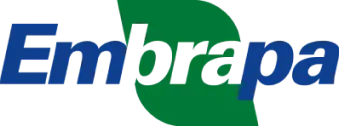RESEARCH LINES
- Soil analysis with a focus on carbon and chemical structure of organic matter;
- Early diagnosis of diseases in citrus plants;
- Analysis of inputs, water, sediments and food.


SÃO CARLOS/SP
National Laboratory of Agro-Photonics – LANAF
Coordinator: Debora Marcondes Bastos Pereira Milori
Email: debora.milori@embrapa.br
Vice coordinator: Ladislau Martin Neto
Email: ladislau.martin@embrapa.br
Website: https://www.embrapa.br/laboratorio-nacional-de-agro-fotonica-lanaf
RESEARCH LINES
SKILLS
ACTIVITY FOCUS AREA
MOST ADVANCED RELEVANT TECHNOLOGIES
HIGHLIGHTS
Agrorobótica, Acqua Nativa Environmental Monitoring, Brazil Agritest Precision Technology, Macrofen Tecnologias Químicas, 5Ecos Soluções + Sustentaveis, Dairy Equipamentos, FIT – Fine Instrument Technology, Nanox Intelligent Materials, Saci – Soluções em Sampling and Information Collection, Siena Company.
Laser induced plasma optical emission spectroscopy (LIBS) through sistemthose with single pulse with infrared laser (1064 nm), green laser (532 nm) and uv laser (266 nm) and double pulse (DP-LIBS) in different geometries and combinations of lasers;
Remote LIBS spectroscopy to be carried on Rover-type autonomous vehicles;
Fluorescence spectroscopy in emission, excitation, synchronized and three-dimensional modes;
Luminescence spectroscopy;
Resolved fluorescence spectroscopy in the temdust;
UV-visible light absorption spectroscopy;
Laser-induced fluorescence spectroscopy (LIFS) with excitation at 405 nm;
Laser-induced fluorescence spectroscopy (LIFS) with excitation at 560 nm;
Multi-excitation fluorescence imaging for plants and small animals;
fluorescence loupe
Mid-Infrared Spectroscopy (FTIR)
Near Infrared Spectroscopy (NIRS)
Ion chromatography with UV/VIS detector and compact sampler
LIBS infrared laser spectroscopy (1064 nm) automated for large-scale measurements;
Portable LIBS spectroscopy for fertilizer analysis;